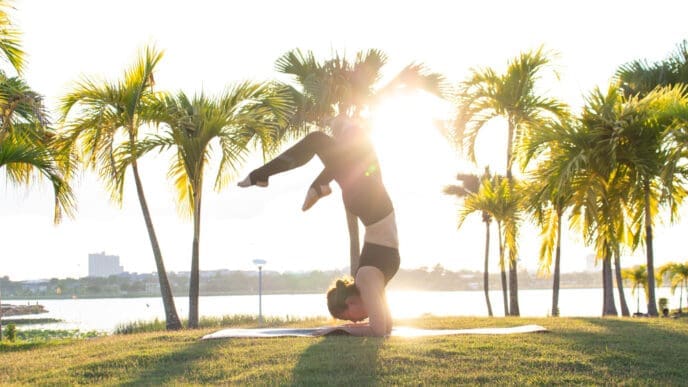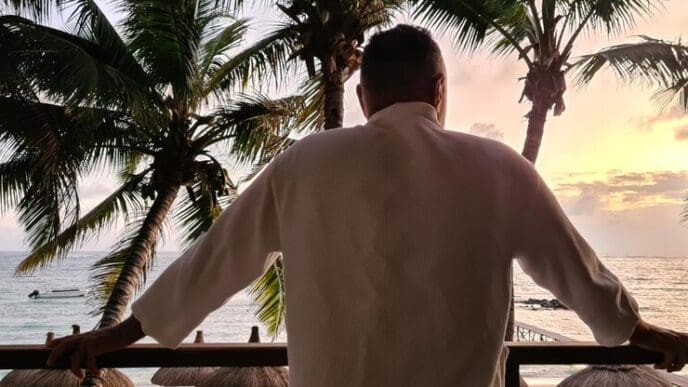In Miami, a city defined by its vibrant cultural mosaic and resilience in the face of both sudden tragedy and chronic stress, residents are navigating the profound experience of grief in ways that defy textbook definitions. Moving far beyond the rigid, linear “five stages” of grief, Miamians demonstrate that healing from loss is a deeply personal, culturally rich, and often communal process. From the collective mourning following the Surfside condo collapse to the solace found in family traditions and the therapeutic rhythm of the Atlantic Ocean, the journey through grief in South Florida is as diverse and dynamic as the city itself, highlighting a more fluid and holistic approach to finding peace after loss.
The Myth of the Five Stages
For decades, the concept of grief has been popularly defined by the five stages: denial, anger, bargaining, depression, and acceptance. This framework, introduced by psychiatrist Elisabeth Kübler-Ross in her 1969 book On Death and Dying, has become deeply embedded in our cultural understanding of loss. However, it’s crucial to understand that her research was based on interviews with terminally ill patients processing their own mortality, not with those who were grieving the death of a loved one.
Modern psychology has largely moved beyond this prescriptive model. Experts now emphasize that grief is not a linear checklist to be completed. Instead, it is a messy, unpredictable, and highly individual experience. Forcing one’s journey into these five boxes can create undue pressure and feelings of failure if a person’s experience doesn’t align neatly with the expected progression.
Grief can be cyclical, with emotions resurfacing months or even years later, often triggered by an anniversary, a song, or a familiar place. There is no right or wrong way to grieve, and there is no set timeline for healing. The process is more like a wild, tangled garden than a straight, paved path.
Modern Models of Grief
In place of the stage theory, mental health professionals now often refer to more nuanced models that better capture the reality of bereavement. These models provide a framework for understanding rather than a prescription for feeling.
One prominent example is the Dual Process Model of Coping with Bereavement. This model suggests that grieving individuals oscillate between two types of stressors: loss-oriented and restoration-oriented. Loss-oriented activities involve confronting the pain of the loss, such as looking at old photos or crying. In contrast, restoration-oriented activities involve adapting to a new life without the deceased, like learning new skills, managing finances, or forming new relationships.
Another important concept is Continuing Bonds. This theory challenges the old idea that the goal of grief is to “let go” and move on. Instead, it posits that healthy grieving can involve maintaining an ongoing, evolving connection with the person who has died. This can manifest through memories, traditions, and integrating their legacy into one’s life moving forward.
The Miami Mosaic: Grief in a Multicultural Hub
Nowhere is the inadequacy of a one-size-fits-all grief model more apparent than in Miami. As a global crossroads, the city is home to a rich tapestry of cultures, each with its own unique rituals, beliefs, and approaches to mourning. Here, grief is rarely a solitary affair; it is a communal experience, deeply rooted in family and tradition.
For many in Miami’s large Cuban-American community, for example, grief is expressed openly and collectively. Funerals are often large gatherings, and the mourning period is characterized by immense support from an extended network of familia and friends. The concept of family extends far beyond the nuclear unit, creating a powerful safety net during times of loss.
Similarly, Miami’s Haitian community draws on deep spiritual and communal traditions. Gatherings, prayer, and storytelling are central to processing loss, often blending Catholic and Vodou influences. The community rallies to provide not just emotional but also practical support, reflecting a collective understanding that no one should grieve alone.
These cultural approaches stand in stark contrast to a more reserved, individualistic Anglo-American style of mourning. In Miami, the vibrant, expressive nature of its Latin and Caribbean cultures infuses the grieving process with a sense of shared humanity and boisterous life, even in the face of death.
Collective Trauma and Communal Healing
Miami’s unique approach to grief is perhaps most visible in its response to collective trauma. The city has weathered numerous hurricanes, economic downturns, and acts of violence, but the 2021 collapse of the Champlain Towers South in Surfside stands as a profound example of shared loss.
In the aftermath of the tragedy, the community’s response was immediate and overwhelming. Spontaneous memorials bloomed along the fence near the site, covered in photos, flowers, and handwritten notes in English, Spanish, Hebrew, and Russian. Vigils and prayer services brought together people of all faiths and backgrounds, united in their shared shock and sorrow.
This communal grieving process provided a public space for private pain. It allowed residents to bear witness to each other’s suffering and offer support, transforming an unimaginable tragedy into a moment of profound solidarity. The murals that were later painted and the permanent memorials now being planned are not just remembrances; they are testaments to a community’s capacity to heal together.
This pattern of communal healing is a recurring theme in South Florida. After devastating hurricanes, neighbors help neighbors clear debris and rebuild homes. This shared experience of loss and recovery forges a unique form of resilience, teaching that strength is found not in isolation, but in connection.
Finding Solace: Unique Pathways to Healing in South Florida
Beyond cultural traditions and community responses, Miamians have access to a unique set of resources for navigating their personal grief journeys. The very environment of South Florida offers pathways to healing that are both powerful and accessible.
The Healing Power of Nature
For many, the vastness of the Atlantic Ocean provides a sense of perspective and peace. A walk along Miami Beach, the sound of the waves, or the salty air can be profoundly therapeutic. The water serves as a place to reflect, to release emotion, and to feel connected to something larger than oneself. Likewise, the serene, wild beauty of the Everglades offers a different kind of natural solace, a quiet space for contemplation away from the city’s bustle.
Art, Expression, and Movement
Miami’s vibrant arts scene also provides a crucial outlet for processing complex emotions. Grief is often pre-verbal, and art can give form to feelings that are too difficult to articulate. Whether it’s visiting the expressive murals of Wynwood, taking a pottery class, or engaging in dance therapy, creative expression allows for a non-linear and deeply personal way to explore and integrate loss.
Seeking Professional and Community Support
Of course, professional help remains a cornerstone of mental wellness. Miami is home to a growing number of therapists and counselors who specialize in grief and trauma, many of whom offer culturally competent care that respects and understands the diverse backgrounds of their clients. Finding a therapist who speaks one’s language or understands one’s cultural context can make a significant difference.
Support groups, both formal and informal, also play a vital role. Organizations across the county offer specialized groups for those who have lost a spouse, a child, or a loved one to suicide. These spaces provide a sense of belonging and understanding, connecting individuals with others who truly comprehend what they are going through.
Ultimately, navigating grief in Miami is a lesson in embracing complexity. It’s about understanding that healing doesn’t mean forgetting, but rather finding a way to carry the memory of a loved one forward. It is a journey that moves beyond prescribed stages and into a more authentic, fluid, and deeply human experience, one that is shaped by the city’s sun, its sea, its diverse people, and its unbreakable spirit of community.














